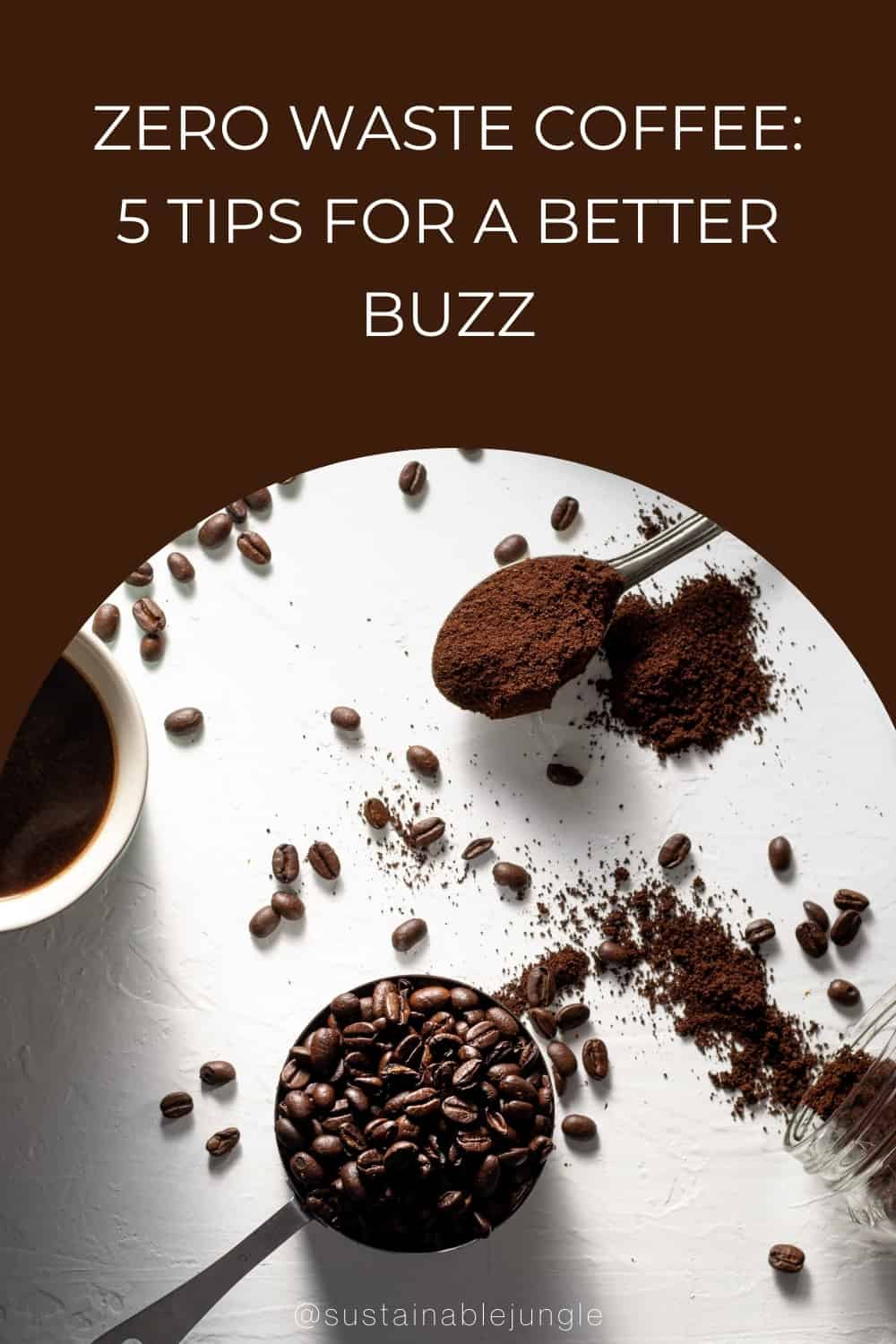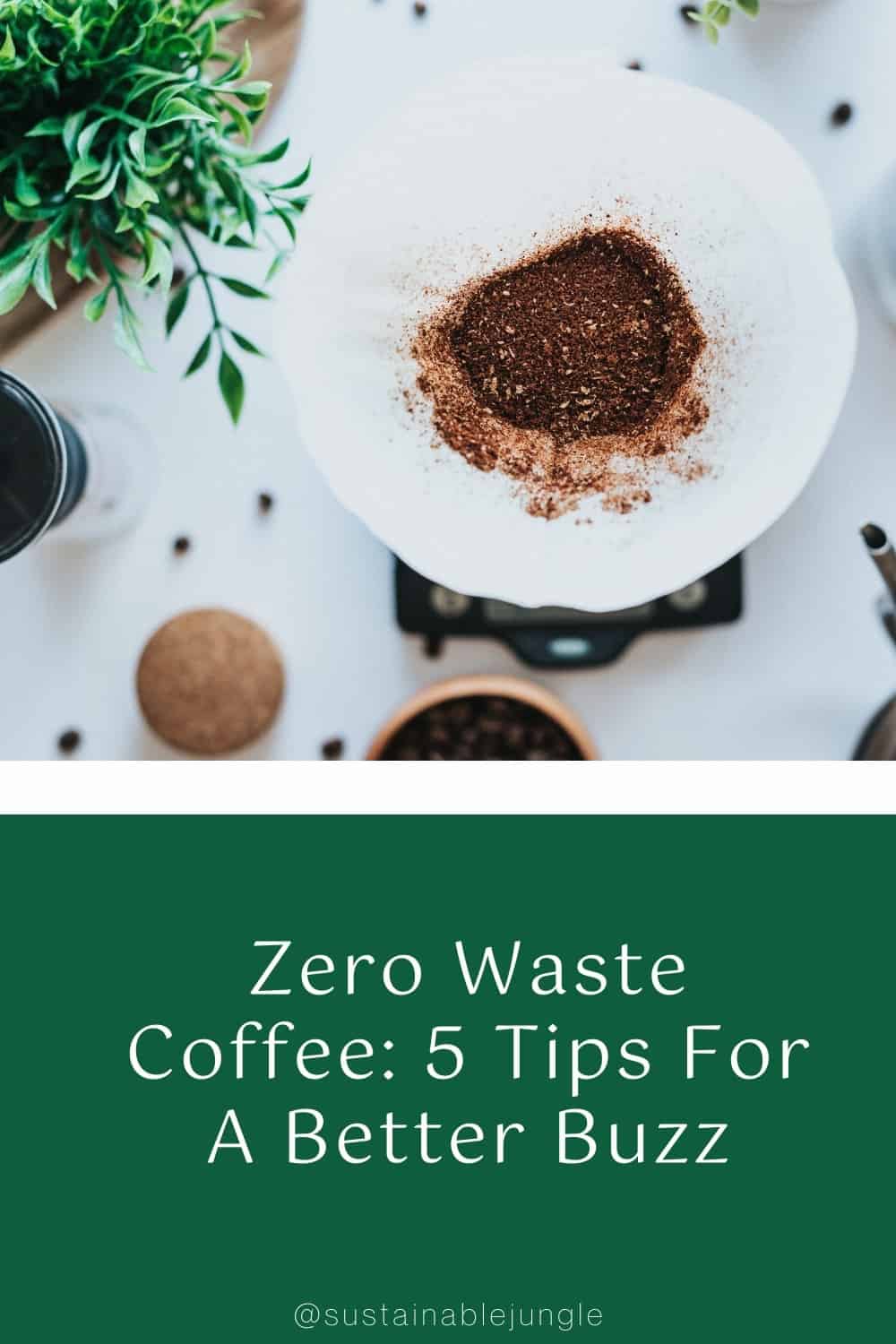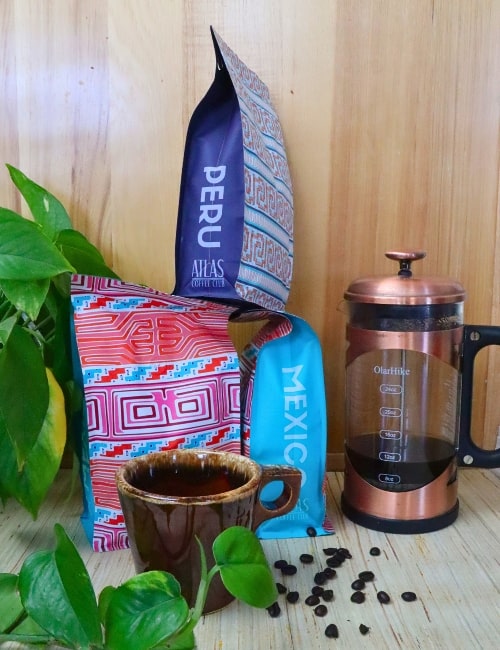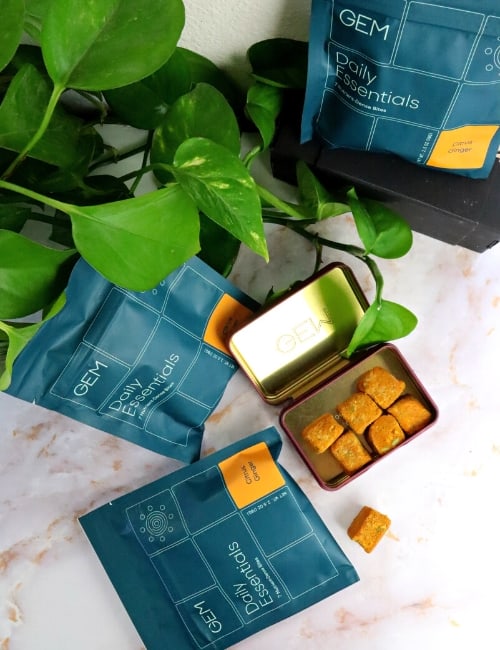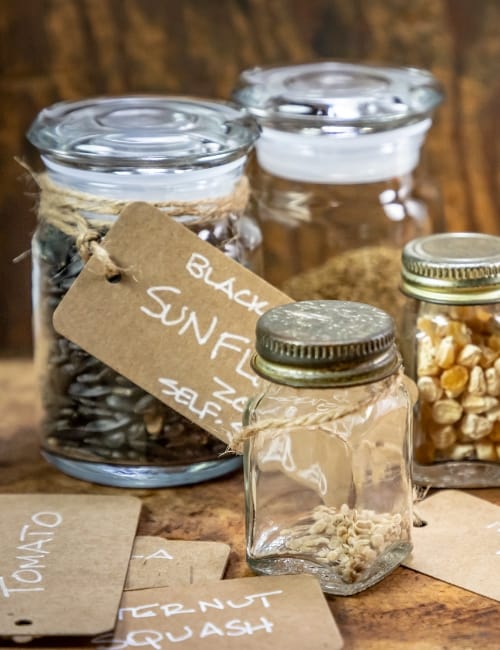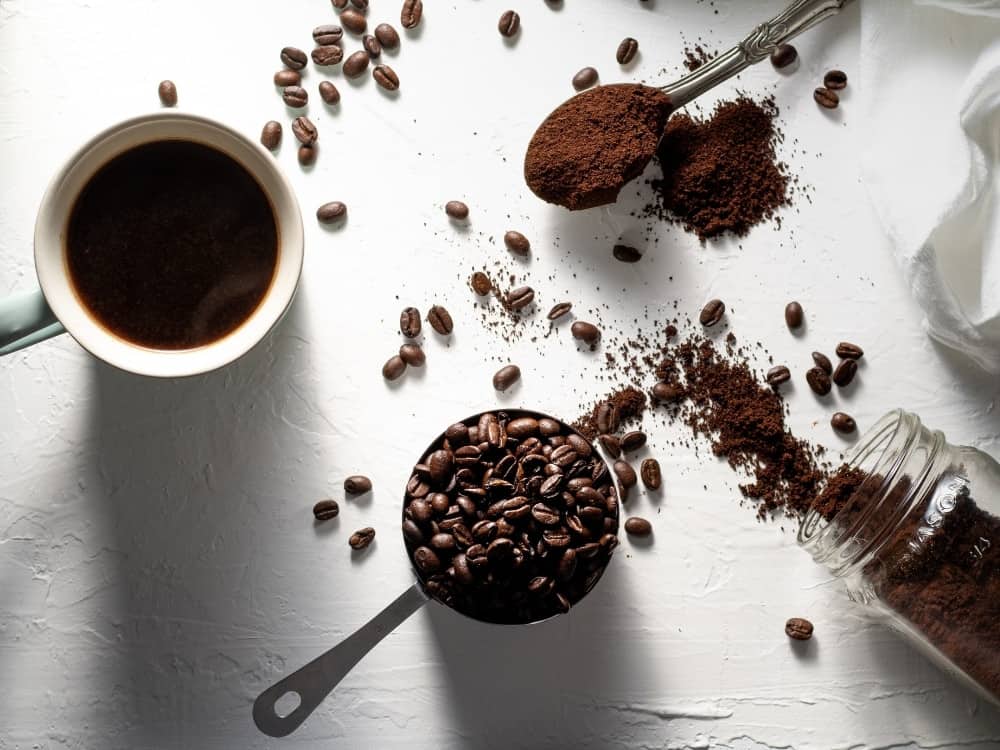
Zero Waste Coffee: 5 Tips For A Better Buzz
Ahh, the sweet, sustainable aroma of zero waste coffee.
Unfortunately, the green seeds that are roasted to caffeinate your day aren’t always the greenest.
Like other agricultural crops, the growing, harvesting, processing, packaging, trading, and preparation stages of coffee all have an eco-impact, and collectively a very large one at that.
But if there’s nothing in this world that can get you going like a single-origin roast with a splash of alternative sustainable milk, we’ve got the buzz on a better way to do so.
Ridding our caffeine fixes of as much waste as possible can make every aromatic pick-me-up a little more eco-coffee-conscious.
Grab your biggest mug and let’s look at how to make zero waste coffee.
How To Make Zero Waste Coffee: Brands, Beans & Tools
1. How Can You Buy Coffee Without Plastic?
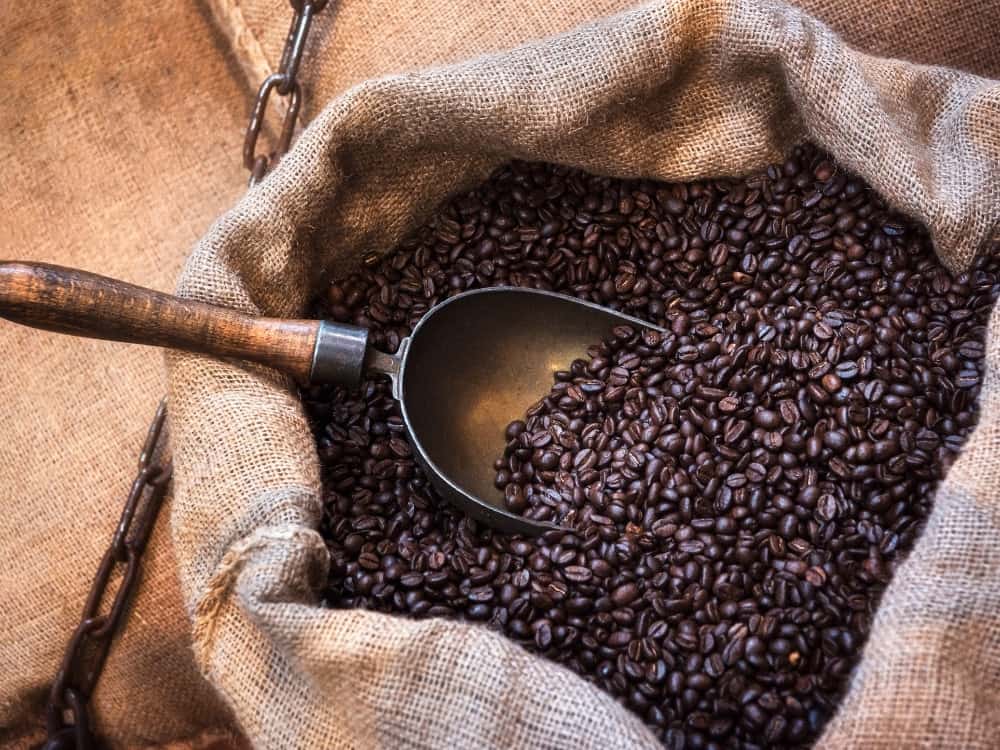
Getting an eco-conscious caffeine fix starts with zero waste coffee beans.
Unfortunately, sourcing them is often as hard as perfecting that flawless latte foam portrait.
The best places to source truly sustainable coffee brands are your local bulk stores or from a local roaster.
Even here, you’ll have to speak up and ask to use your own container, as the bags provided often contain plastic or non-compostable coated linings.
Coffee quality > zero waste packaging
As it stands now, the quality of the beans often trumps zero waste coffee packaging.
You’ve probably noticed a little circle on coffee bags. This (usually plastic) valve allows for the exchange of carbon dioxide and oxygen.
In other words, your coffee beans “breathe” just like you do.
To ensure the best quality, a liner is also needed to keep the beans fresh.
This is where “zero waste” goes out the window.
Are coffee bags zero waste?
Even if the outer packaging is biodegradable kraft paper, the lining changes its end-of-life fate.
Coffee bags are almost always lined with foil or plastic—making them impossible to recycle.
Difficult to separate the two, don’t be deceived by most “compostable” coffee bags as the liners typically account for 40% of the bag’s materials.
Even the greenest options of these feature a bio-based polyethylene liner that’s been designed to break down quicker than conventional types of plastic—but still takes 5-10 years.
Really puts the “dirty” in your dirty chai, does it?
2. Zero Waste Coffee Brands
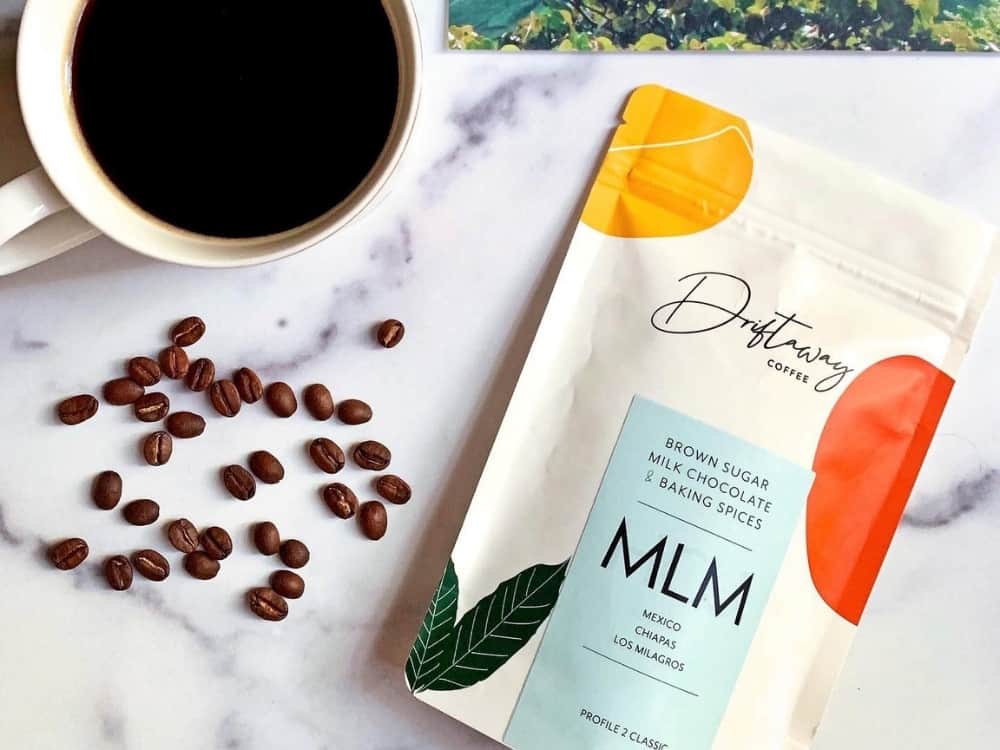
Are there any truly zero waste coffee brands?
At this stage, not many.
In addition to bulk stores online that sell large bags of coffee beans (requiring less packaging over time), there are only a few truly zero waste packaged coffee beans for your low waste coffee break:
This USA zero waste coffee brand uses 100% (read: not just 40- 60%) compostable packaging.
In addition to the outer paper, the film, valve, and laminate are durable, food safe, and made with compostable PLA—an imperfect (but exciting) new player in the world of sustainable food packaging.
They do their best to ensure liveable wages, too.
Here’s a solution for those who love single-serve coffee (and are ready to ditch the terribly wasteful K-Cups): fully compostable filters and outer packaging.
Think tea bags, but for coffee.
Both the filter bags and the single-serve film wrappers are certified compostable through ASTM D6400 and D6868 standards (industrially compostable). The latter is certified USDA Biobased.
They do things a little differently by custom-roasting organic coffee specifically for orders, then shipping them immediately (sans plastic) to ensure the maximum taste and freshness.
The unlined kraft paper bag is recyclable; just remove the wire tie first.
3. Making Zero Waste Coffee
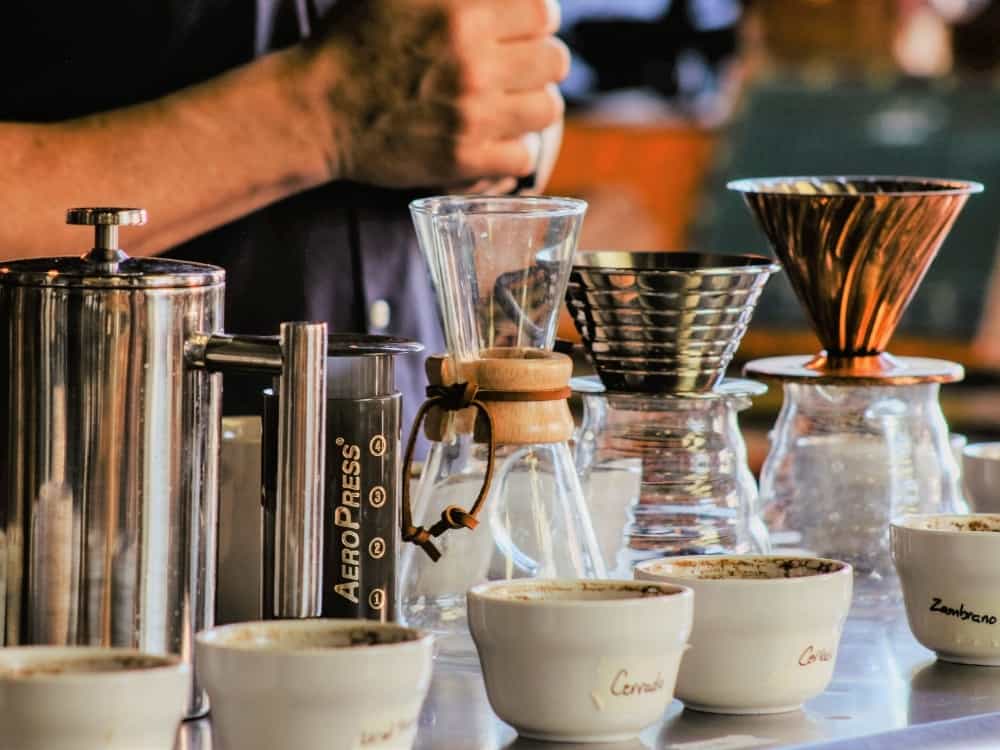
Sourcing zero waste coffee beans may feel dark (roast) and gloomy, but the light (roast) at the end of the tunnel is that preparing them in a zero waste coffee maker is much easier.
But what tools do you need to make a waste free coffee?
First, let’s answer another question to rule out what you don’t need.
What is the least wasteful way to make coffee?
When making your morning brew, you’ll want to think of three types of waste: materials, water, and energy.
There are obvious eco-losers here.
They’re Kwick and don’t use too much energy, but single-serve coffee makers have produced enough non-recyclable waste to wrap around the planet 10 times.
An espresso requires less water than a conventional cup—but making it uses up to 1500 watts for a single shot (almost as much as a dishwasher running for an hour!).
Don’t be discouraged—you can still feed your coffee addiction through other methods of eco extraction.
The French Press
Often considered the least impactful coffee brewing method, a French press (AKA coffee plunger, cafetière, or press pot) makes use of a non-electric glass or stainless reservoir and a filtered plunger.
Simply add coarse ground coffee and boiling water, give it a stir, let it sit for as long as necessary to achieve your desired level of strength (5-20 minutes), then press the plunger down to trap the coffee grounds at the bottom.
French Press plastic free coffee makers are available and the stainless steel filter is reusable and can last years if properly cared for, making this method the best way to make a planet-friendly and affordable zero waste coffee.
If choosing a glass reservoir, always add warm water to heat the glass before adding boiling water. Otherwise, the sudden temperature shift can cause the glass to crack.
Better yet, opt for an all-stainless steel basin that won’t break—even when dropped by hands shaking from caffeine withdrawal (we’ve all been there).
The Moka Pot
Stovetop coffee makers, like the moka pot—often referred to as a Bialetti after the brand that popularized these—are for those who like their coffee strong.
One section of the stainless steel or aluminum pot is filled with water and topped with an espresso shot-size (or larger) filter for coffee grounds.
When put on the stove, the boiling water is percolated through the coffee grounds, leaving you with a delicious cup of coffee.
MIT reported that compared with a French press (176.69 GHGe), a stovetop coffee maker produces just 160.19 GHG equivalent to brew a single cup of coffee.
A high-quality moka pot also doesn’t produce any waste and can be used for decades—making this arguably the best way to make zero waste coffee.
The AeroPress
Great to bring along with your eco-friendly camping gear, the lightweight AeroPress is about as close as you can get to espresso—without the energy consumption.
Like a more concentrated French press, the AeroPress uses a reusable plastic filter and an airtight plunger.
Working like a syringe, boiled water is forced through the filter to make a smooth cup of coffee or, with less water, espresso.
While reusable stainless steel versions are available, the plastic filter is typically lined with a paper filter.
These small pieces of paper can be rinsed, dried, and reused up to 20-30 times, or composted.
The AeroPress itself is made of mostly (non-recyclable) plastic, but replacements of all individual parts are available.
The Pour Over
One of the simplest—yet most prestigious—ways to make a coffee, a pour over is… well, exactly that.
A coffee brewer (a funnel-shaped “dripper”) and filter are placed on top of a mug. Ground coffee is added and hot water is carefully poured over in a circular motion so that the coffee drips slowly into the mug.
Some brewers still utilize disposable paper filters, but paperless methods—i.e. reusable organic cotton and stainless steel filters—are available for the best zero waste coffee pour over.
The brewers are often made with plastic components or easy-to-break glass, contributing to some significant end-of-life waste. As with the French press, warm up the glass before adding boiling water.
The Drip Coffee Maker
A go-to way to make coffee for many households, old school coffee pots are for high-quantity coffee appetites (most can produce up to 12 cups).
But quantity doesn’t always translate to quality—especially for our planet.
A drip coffee maker does require energy to heat the water that drips through the coffee grounds and into the pot—but has been found to require less energy per cup of coffee than boiling coffee for a pour over or French press.
However, a hot plate that remains on (especially when forgotten about all day) to keep the pot warm may negate any energy efficiency benefits you were hoping to gain.
Drip coffee makers require filters, too, so opt for reusable stainless steel or organic cotton ones.
Drip coffee makers are bulkier than the aforementioned methods, and may only last 3 years before leaving you wondering how to dispose of electronics.
E-waste recycling may be possible for a non-working coffee maker, but in most cases, they end up in a landfill.
Add in the fact that the always-glass pots may be easily broken rendering the entire machine unusable if an exact replacement cannot be procured, and it’s hard to justify that java.
The Espresso Machine
If you’re a true coffee connoisseur, then there’s nothing like espresso, which is the gateway to all our favorite lattes and cappuccinos.
That rich, full-bodied flavor does require more coffee, though. A mug of drip coffee uses just 14-16g, while espresso calls for 16-22g of coffee.
That, and immense energy use aside, an espresso machine does have some eco-benefits going for it.
It uses very minimal water (5 ml for an espresso vs 200 ml for a French press) and requires no filters save for the stainless steel basket in the portafilter.
Made with quality materials, an espresso machine can last 20 years or longer.
Unlike these others, espresso machines are also more likely to have repair options.
The Handheld Espresso Machine
If you love a strong shot but don’t love the energy waste (and price tag) associated with espresso machines, the brand WACACO may have the answer.
Their filterless handheld espresso machines operate on an electricity-free pressure brew system. Just add the grounds and boiling water, push the pump button, and enjoy.
However, the body is plastic so care for it properly to ensure it lasts.
4. Repurposing Zero Waste Coffee Beans
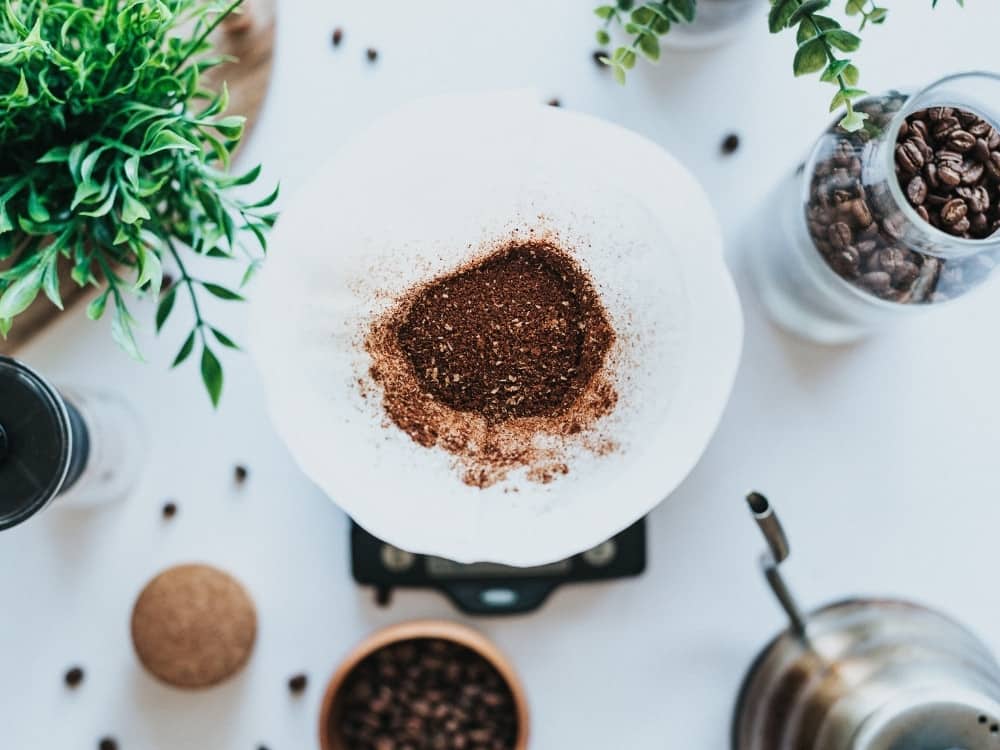
Sourcing and making zero waste coffee are only two pieces of the coffee-cake you’ll consume with your cup of joe.
So, how do you make coffee without waste?
The grounds should be a key consideration in answering that.
When they end up in landfills, the compounds and oils increase soil acidity, in turn creating acidic leachate (liquid), which is damaging to the environment.
This is in addition to anaerobic decomposition releasing methane gas, which is a far more potent GHG than CO2.
There’s no reason coffee grounds have to end up in the landfill, though. They have many potential upcycling uses:
- Coffee grounds can be added to your indoor compost bin or outdoor pile.
- If you have a vermicompost system, your coffee grounds can be fed to hungry worms. In fact, they’re a favorite answer to the question, “What do worms eat?”. If adding a lot, balance out the grounds with more bedding.
- Nitrogen-rich, spent grounds can be sprinkled around acid-loving plants (like tomatoes) as fertilizer. If you don’t have any, local farms often accept used coffee grounds for fertilizer.
- Spent grounds can provide the growing substrate for mushrooms, especially oyster mushrooms.
- Use spent coffee grounds as a smell-good skin exfoliant in the shower (or add them to DIY soap). Now THAT’S some zero waste skin care.
- Supplement your zero waste dish soap by adding a few teaspoons of coffee grounds to a sponge helps remove tough grime on pots and pans.
- Put in a sachet, spent coffee grounds can be used like baking soda to soak up bad odors in a space.
- If hair styling products remain after a wedding or big event, coffee grounds can help to clean hair and loosen residue
- With or without mordants, coffee grounds can be used to naturally dye natural fabrics and polyester.
They may not have as much caffeine or their once bold flavor profile but used coffee grounds still have beneficial antioxidants and can be re-brewed for a second cup of coffee.
5. Sustainable Plastic-Free Coffee Considerations
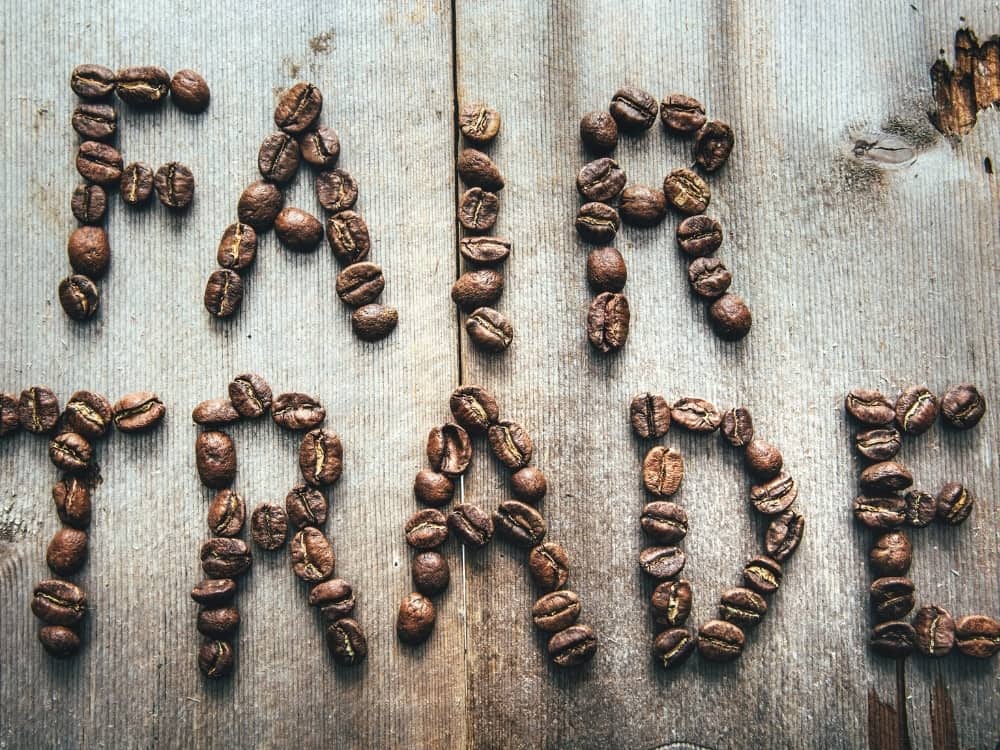
Waste-free coffee is only one sip of a better-for-earth buzz.
For every mug of coffee, it’s important to recognize that the preparation aspect only accounts for 30% of overall emissions—with packaging accounting for even less.
Coffee bean cultivation takes the (coffee) cake by accounting for 55%.
That said, in addition to choosing the most planet-friendly packaging and preparation methods, be sure to buy from fair trade coffee companies.
If you can find beans that have been shade-grown or rain fed, that’s better from an ecological perspective, too.
Did you know we Have a Newsletter?
We cover the latest in sustainable living, fashion, zero waste, beauty, travel, finance and more…
Final Thoughts On The Best Zero Waste Coffee
Oftentimes, low waste living starts in the kitchen.
Sustainable tea or a double shot of espresso, whatever your morning brew it sure has the power to start your day off right—in many respects.
While totally zero waste coffee is still difficult to find, we’re getting closer.
Even low waste coffee can tip the spoon in the right direction, which is needed since we’ll have 50% less farming area and double the coffee addicts by 2050.
If you have friends with a reusable coffee cup attached at the hip—or know people still turning to K-cups—then help them brew something better by sharing this guide so they too can know how to make coffee without waste.
Pin these:
